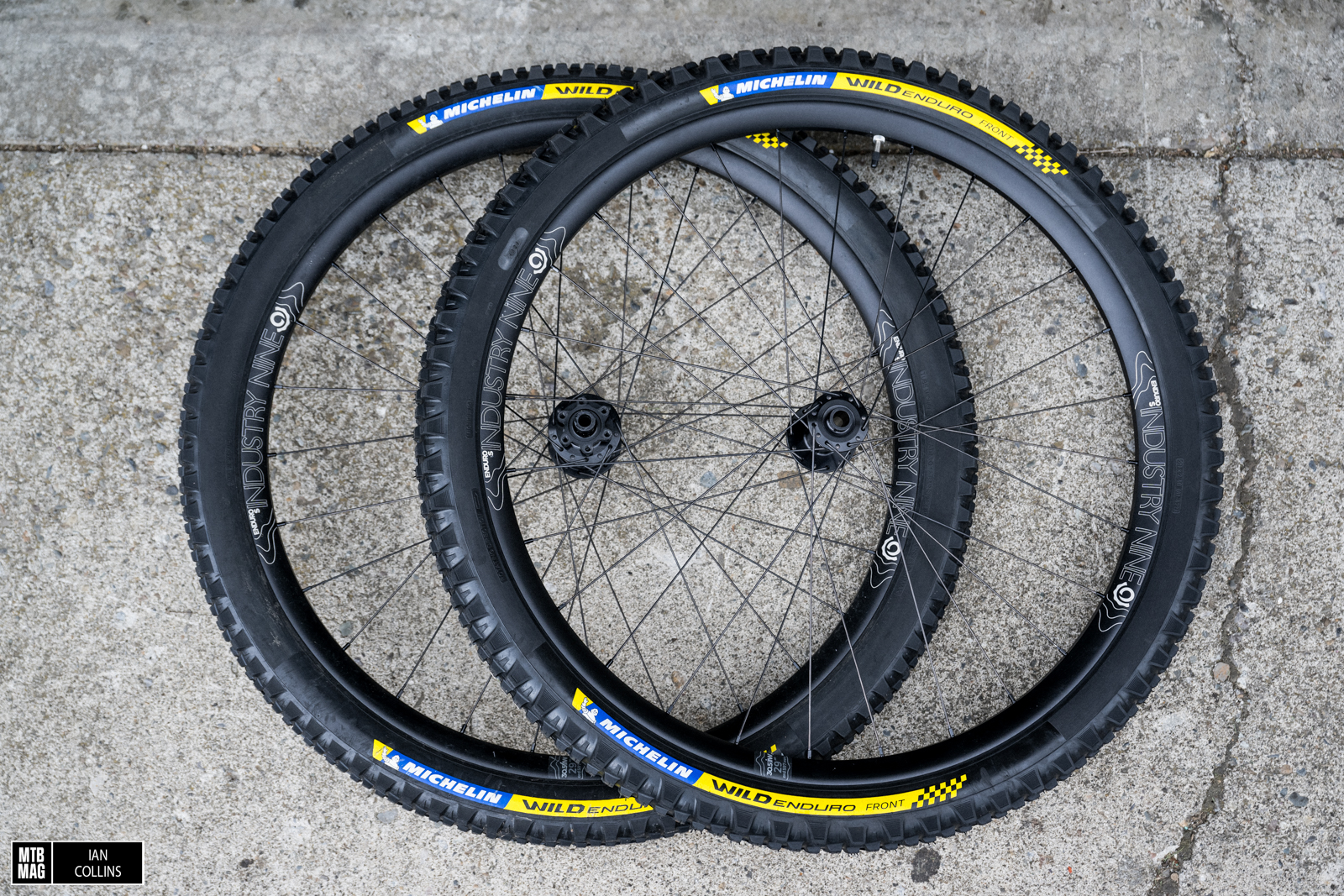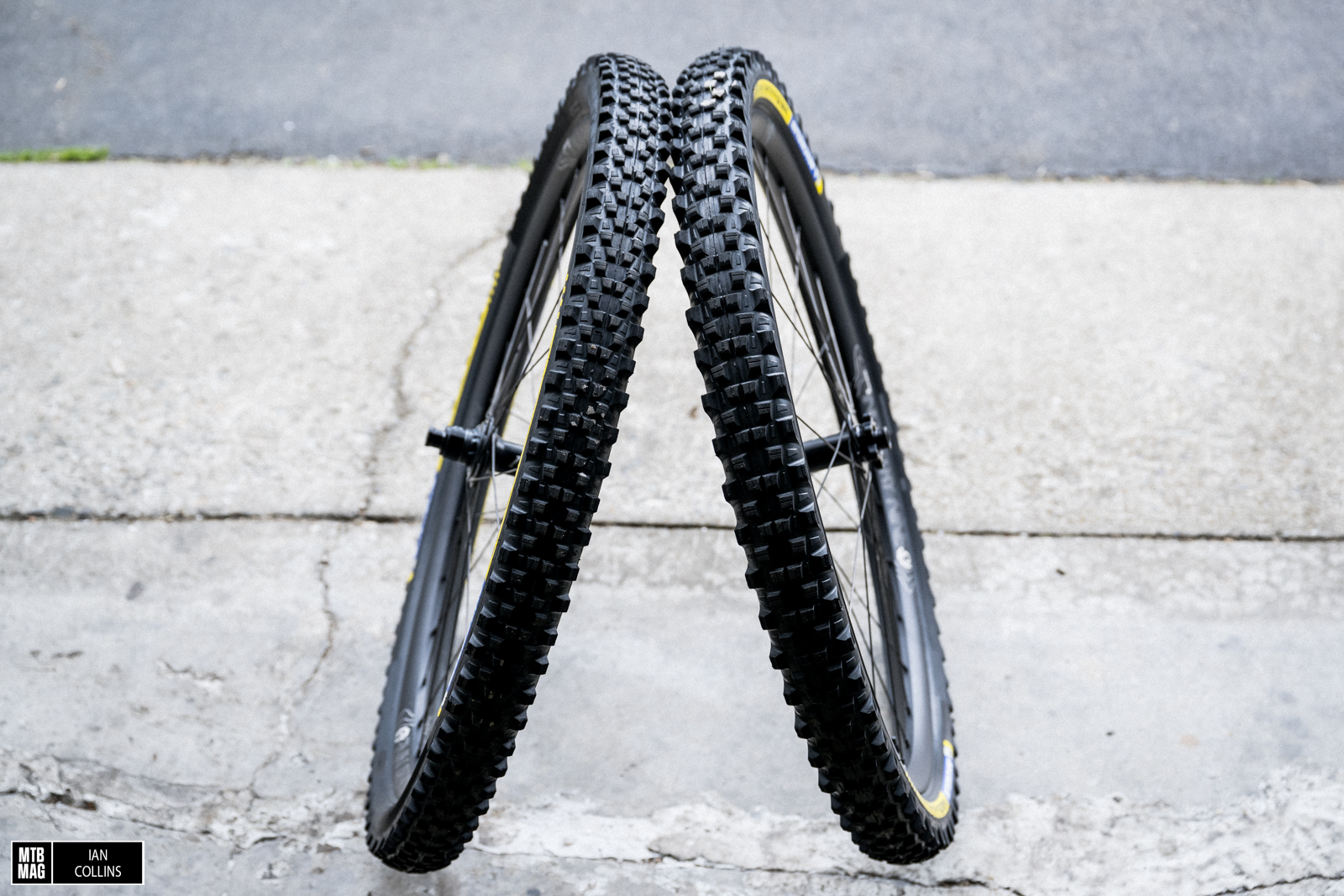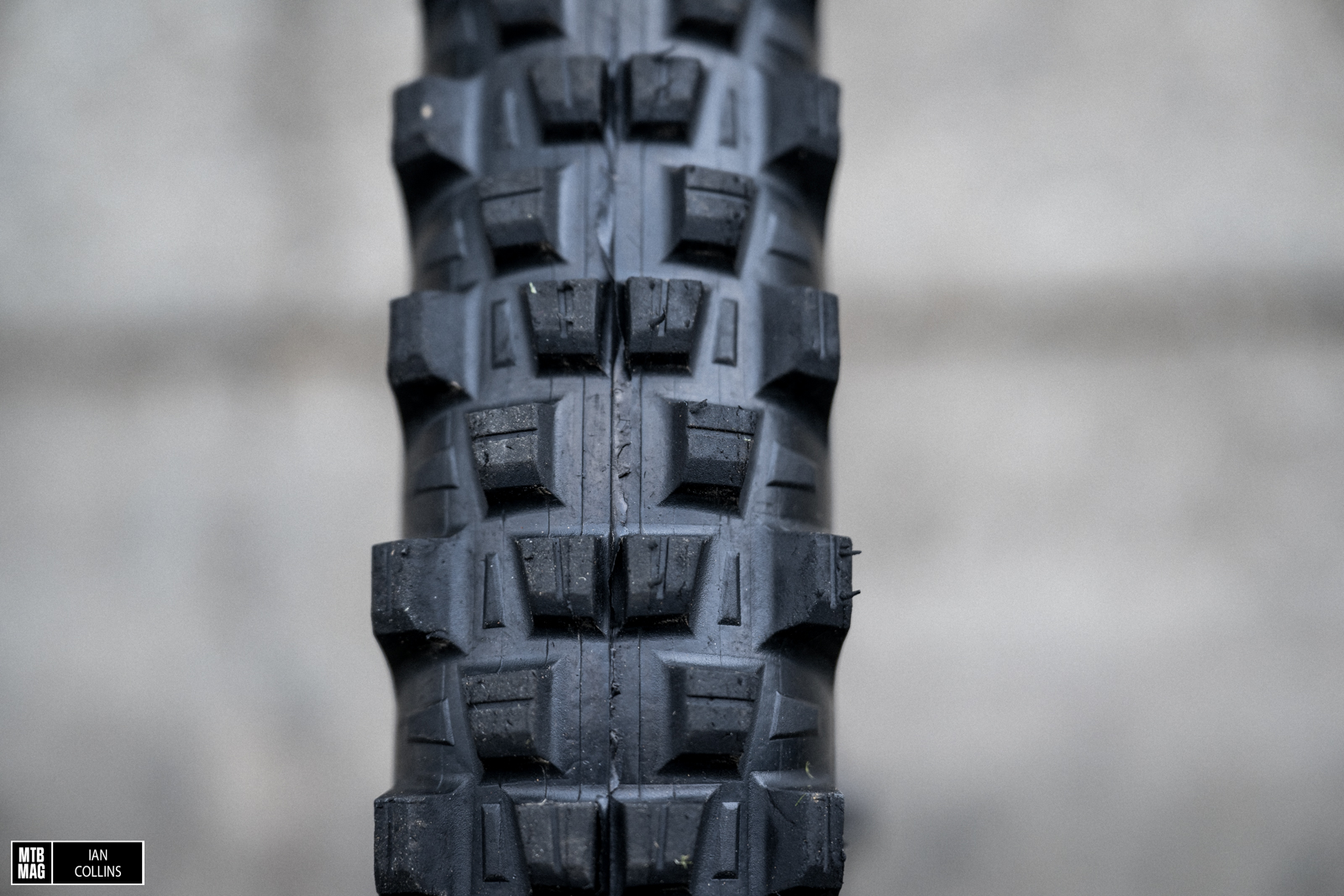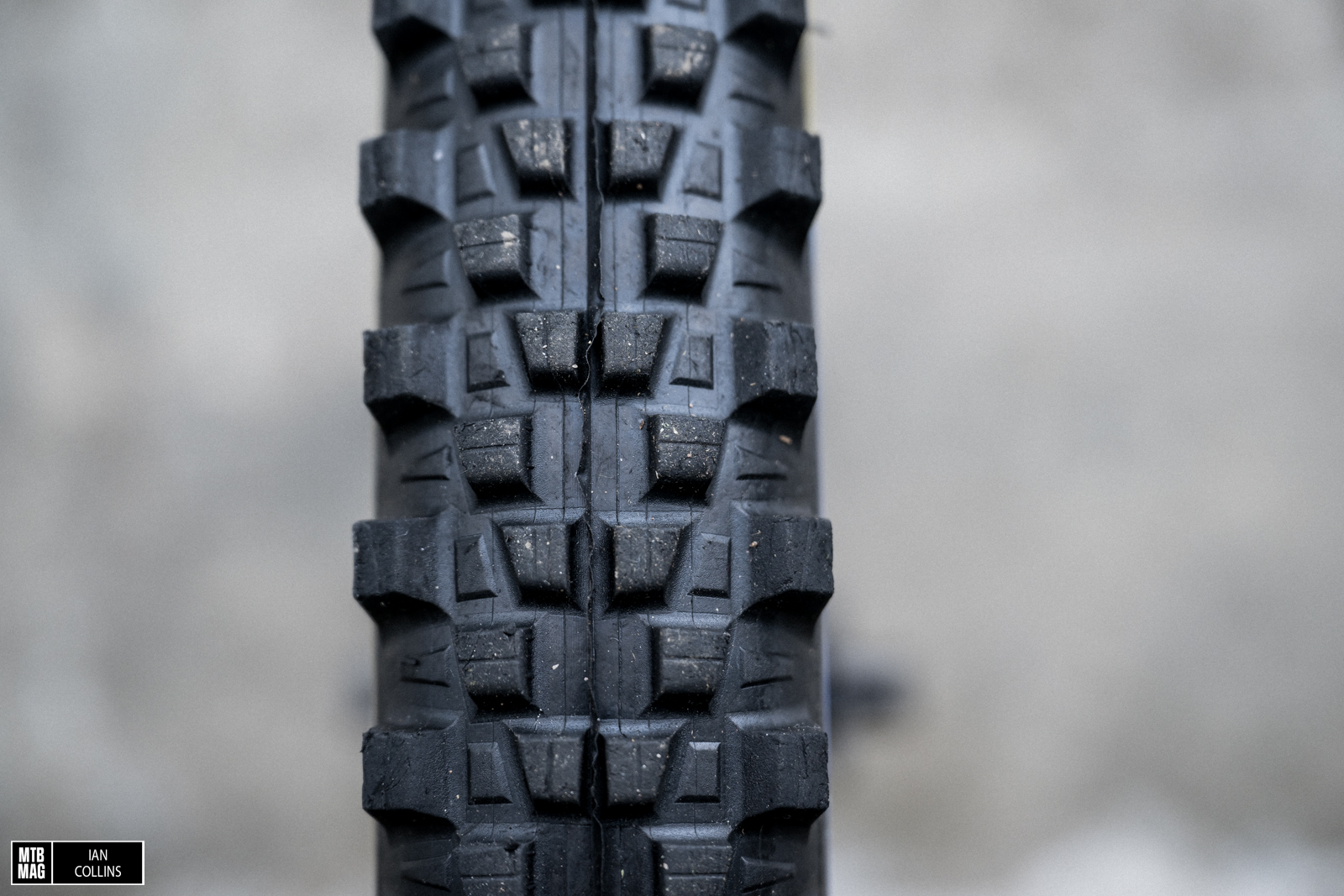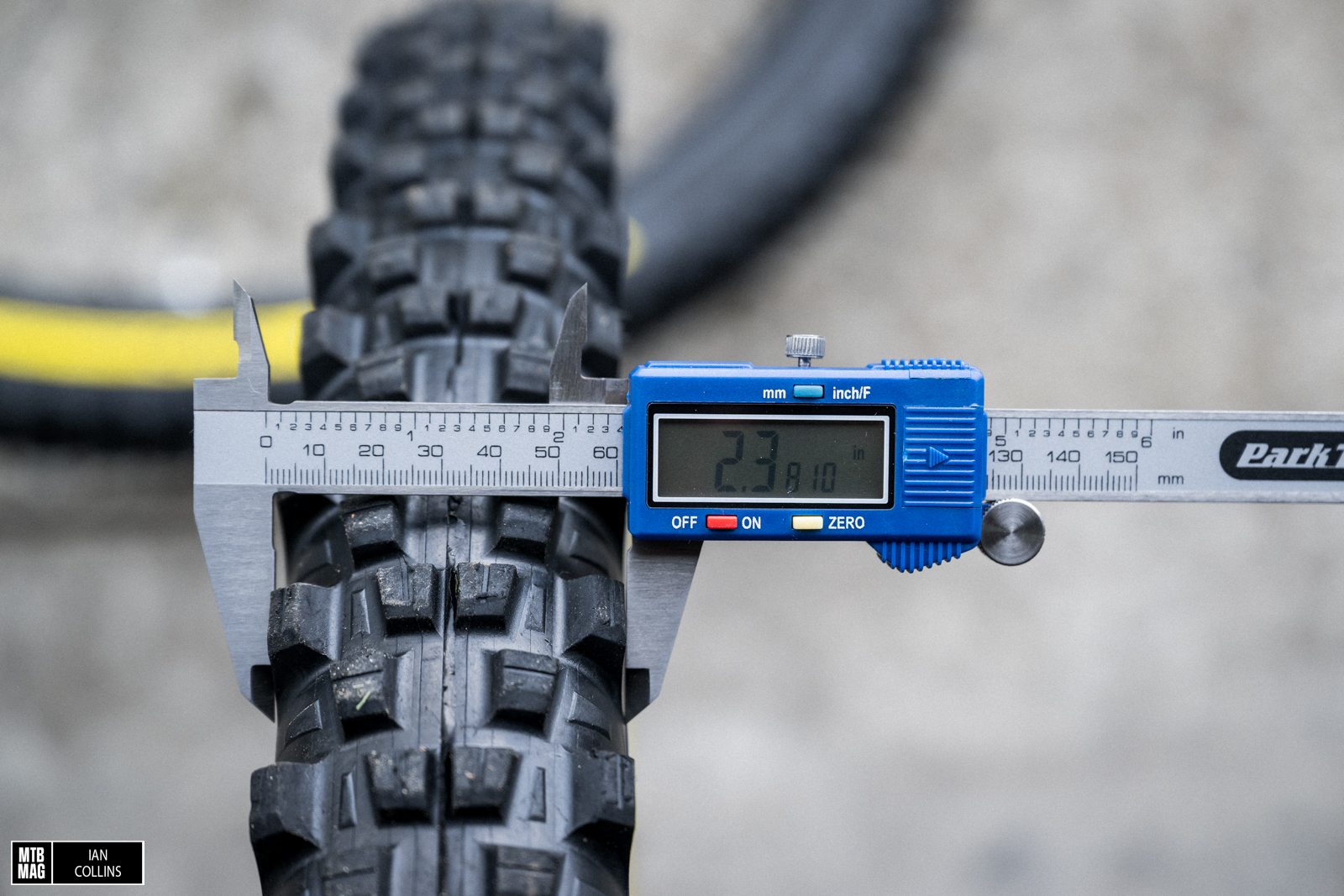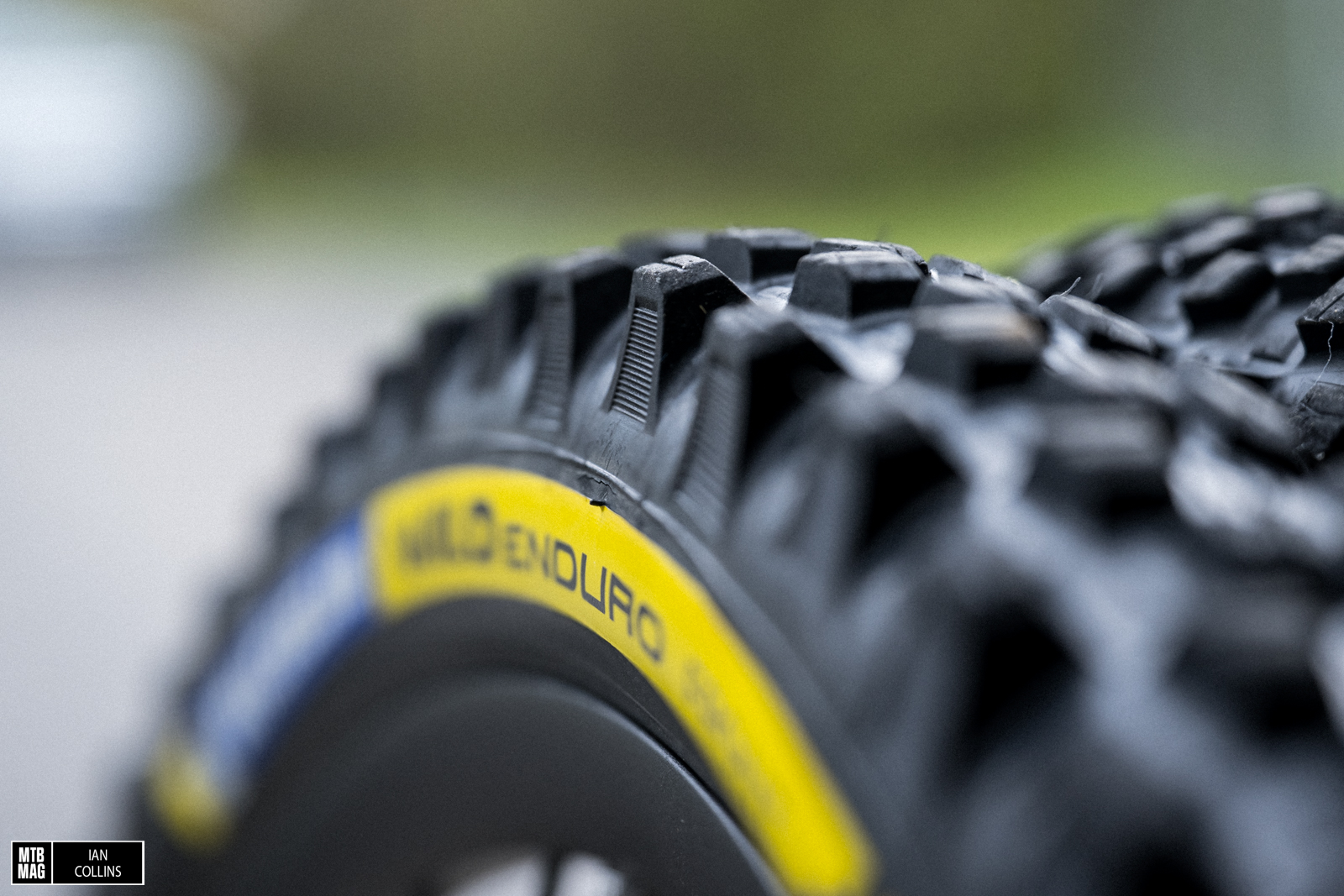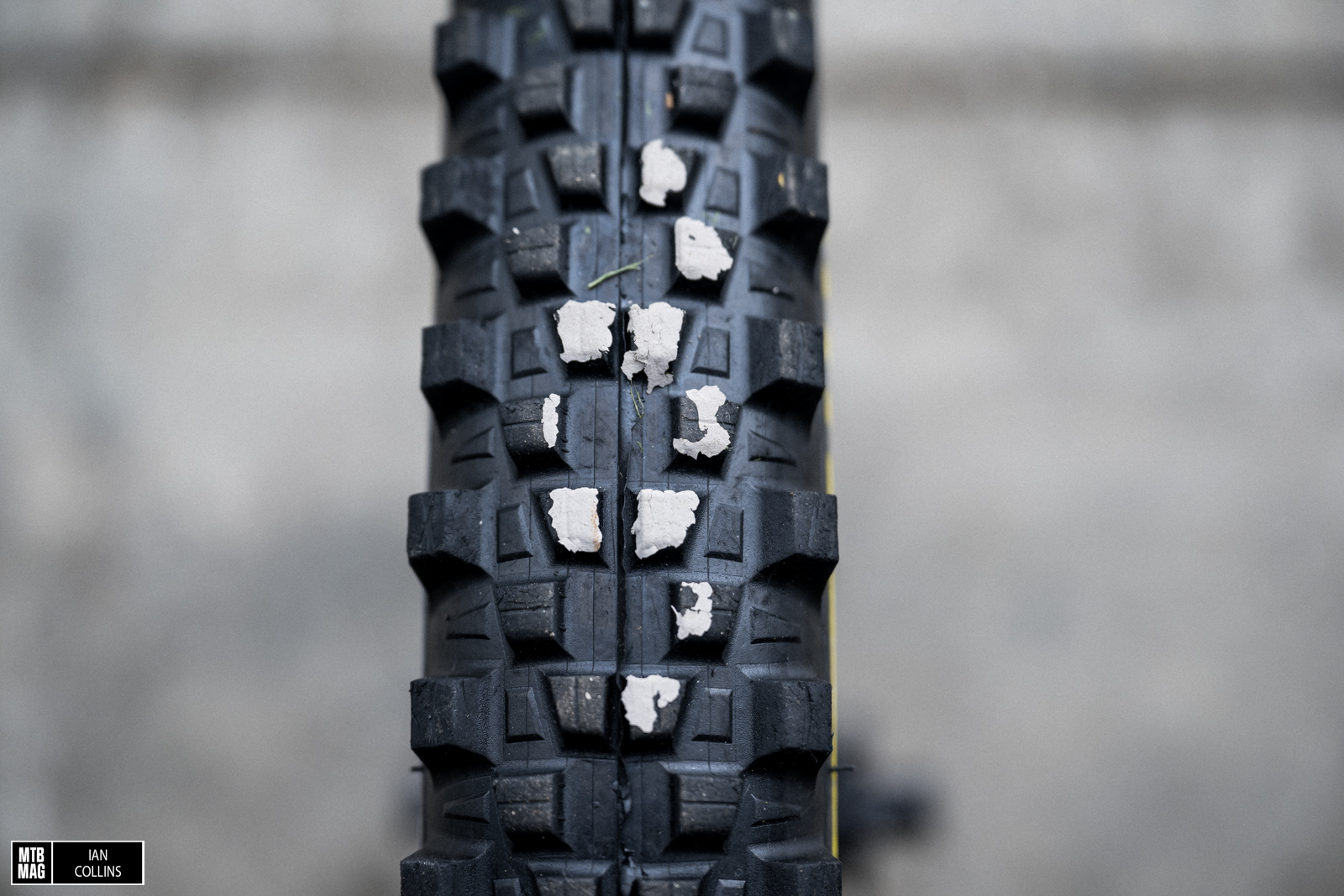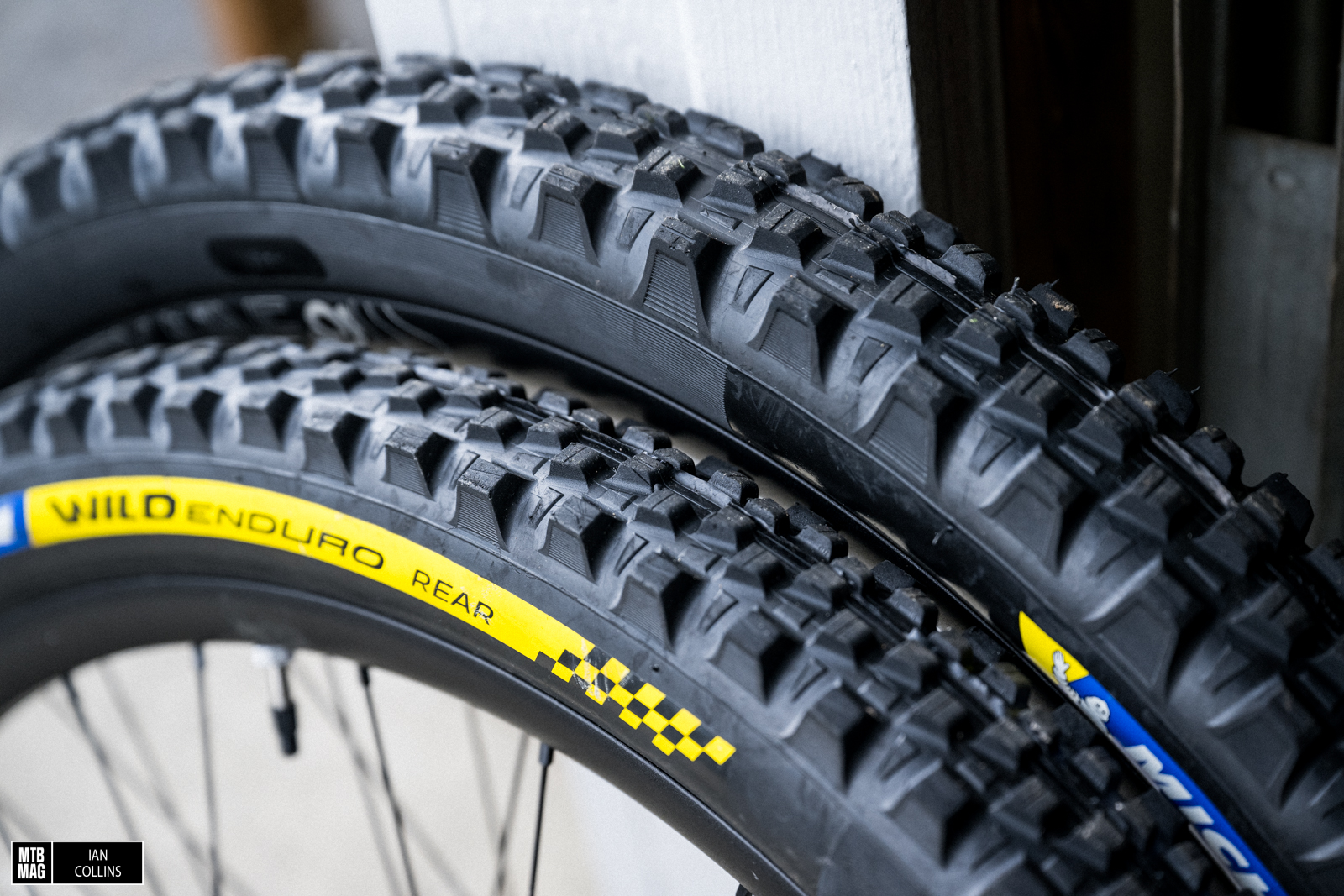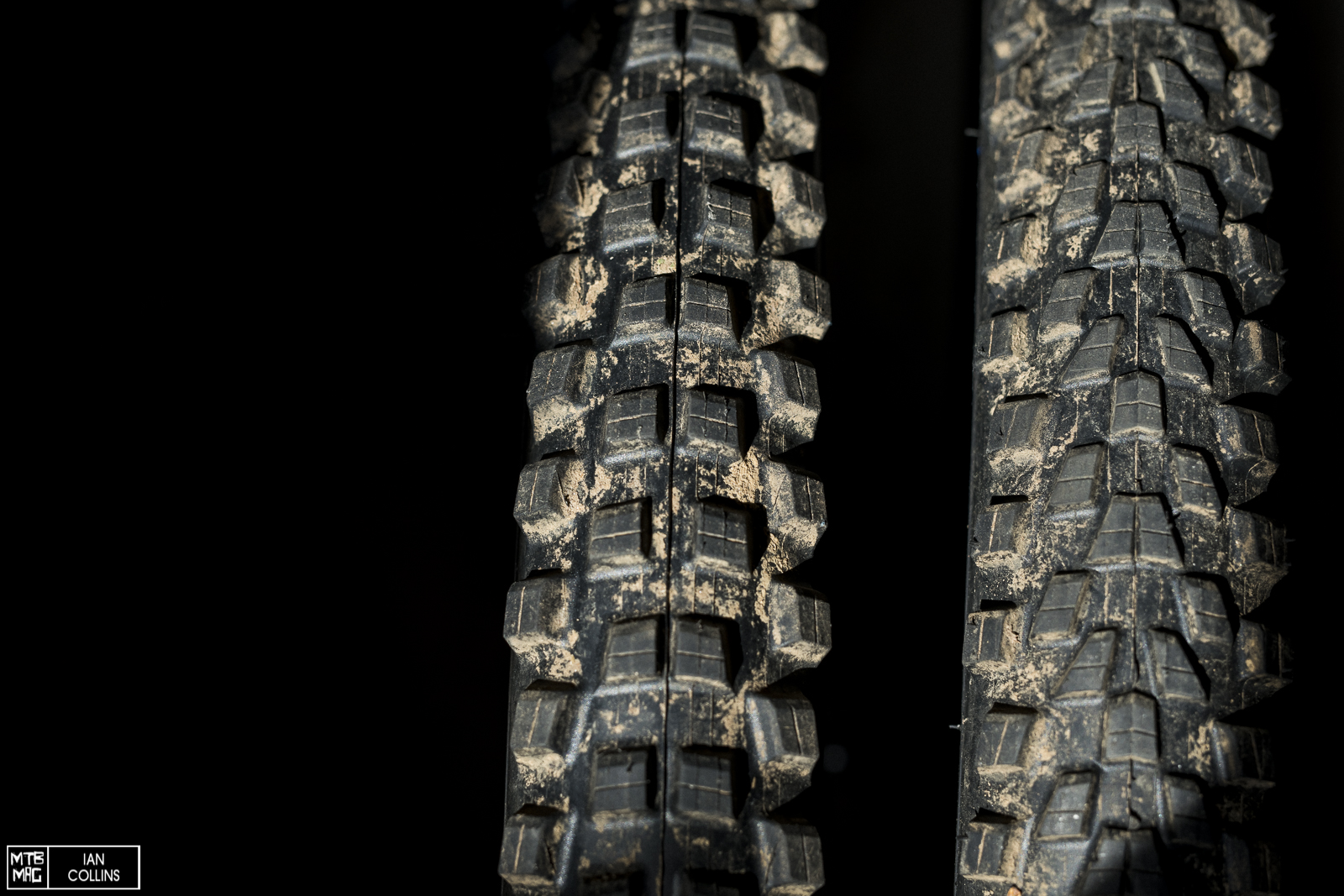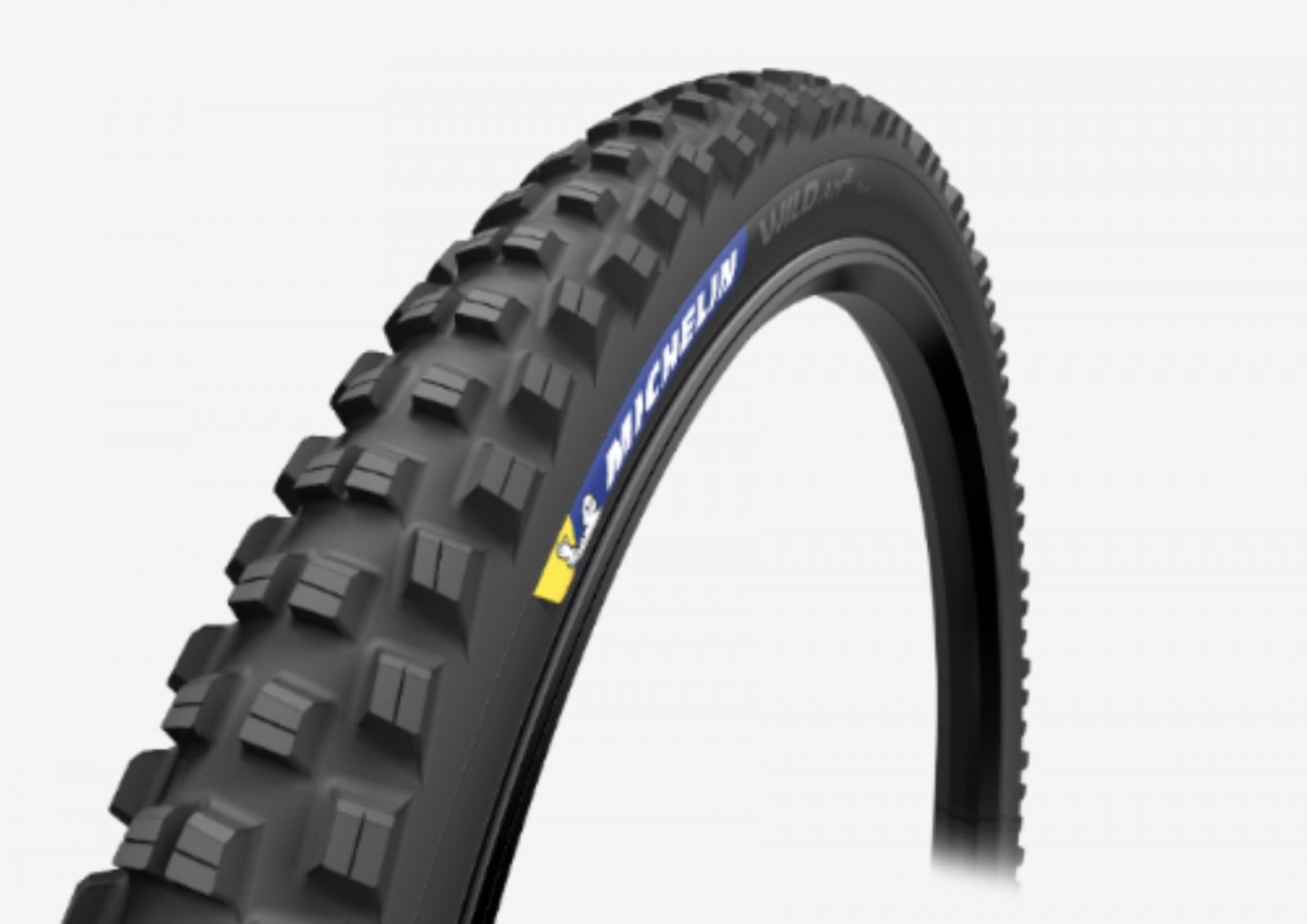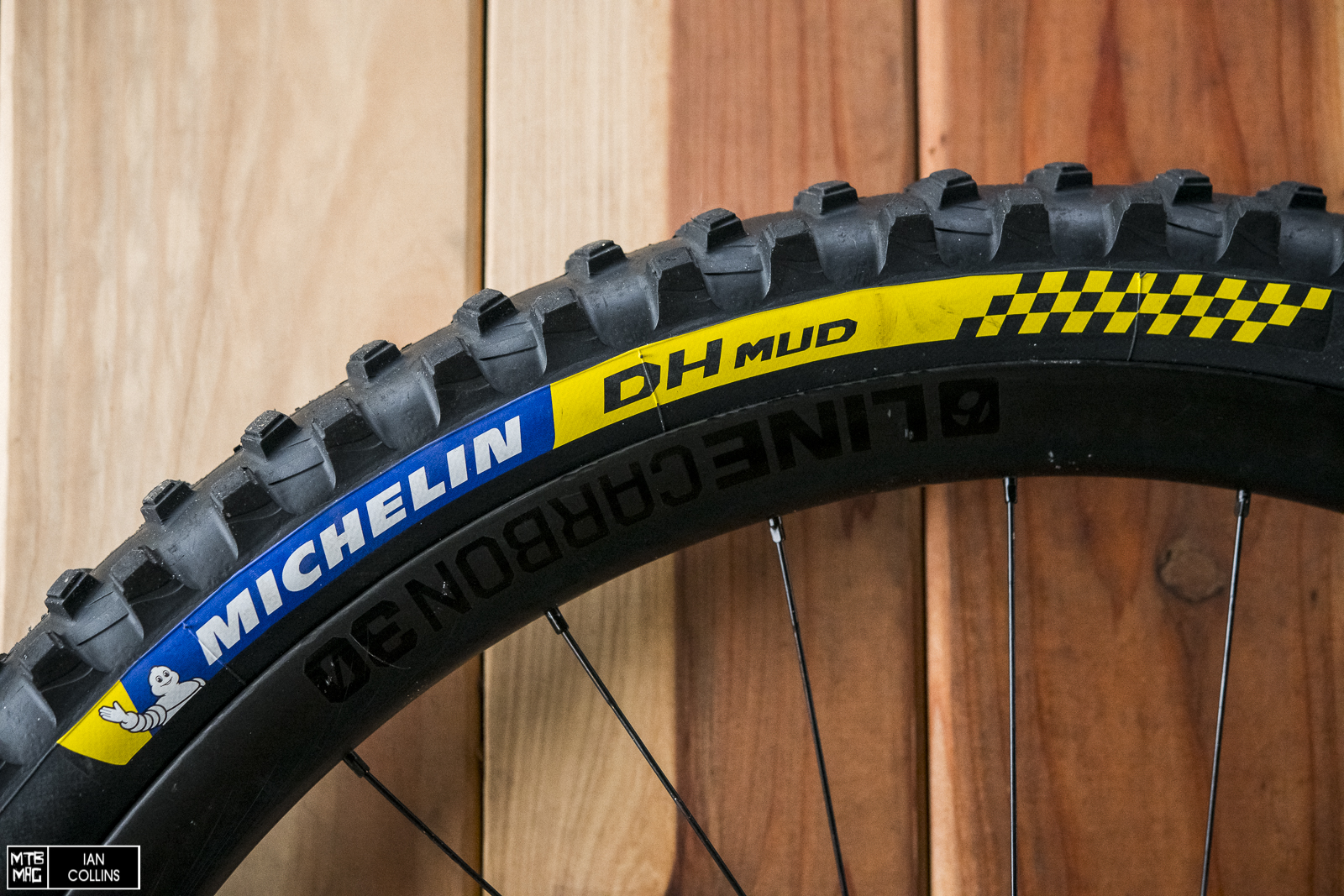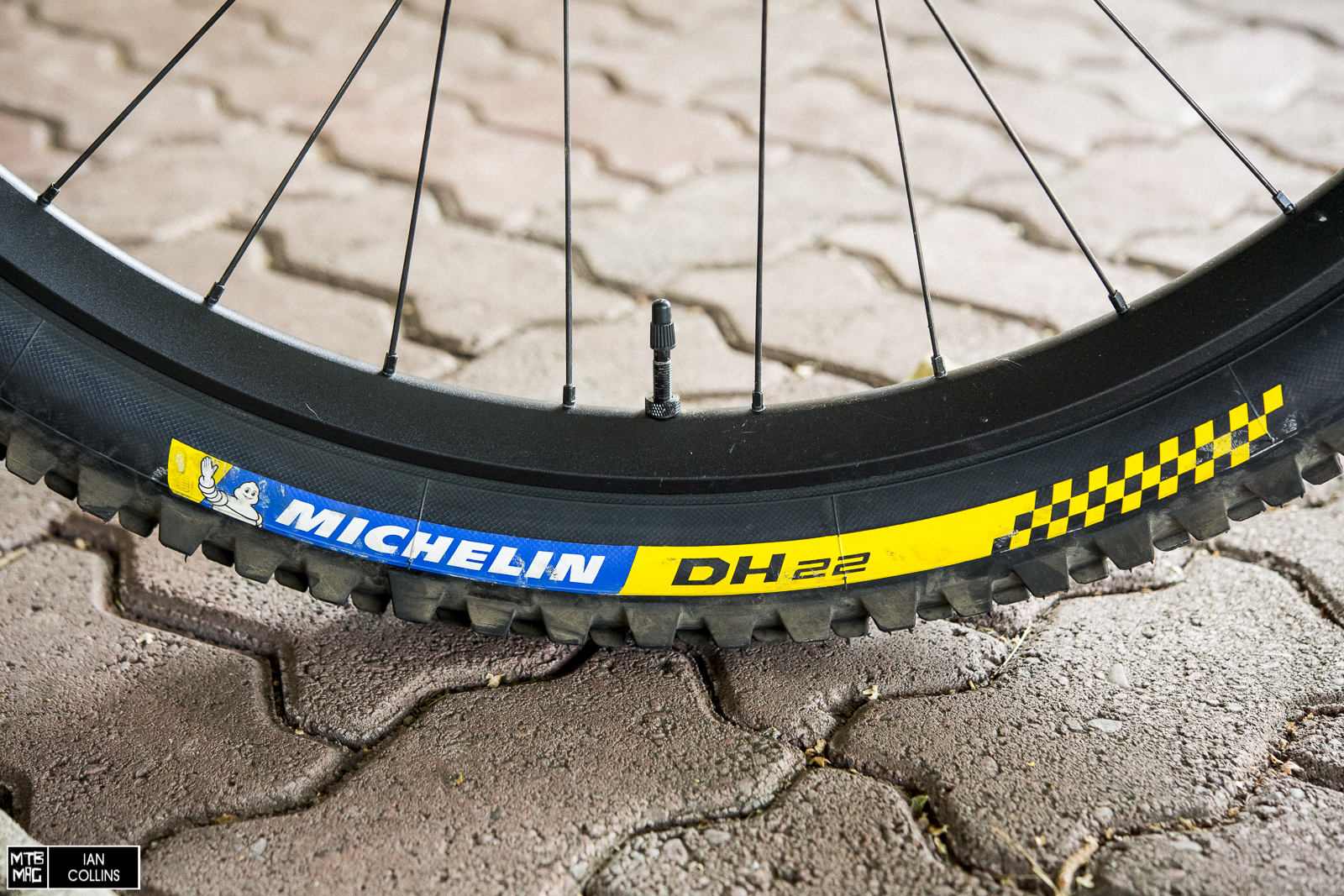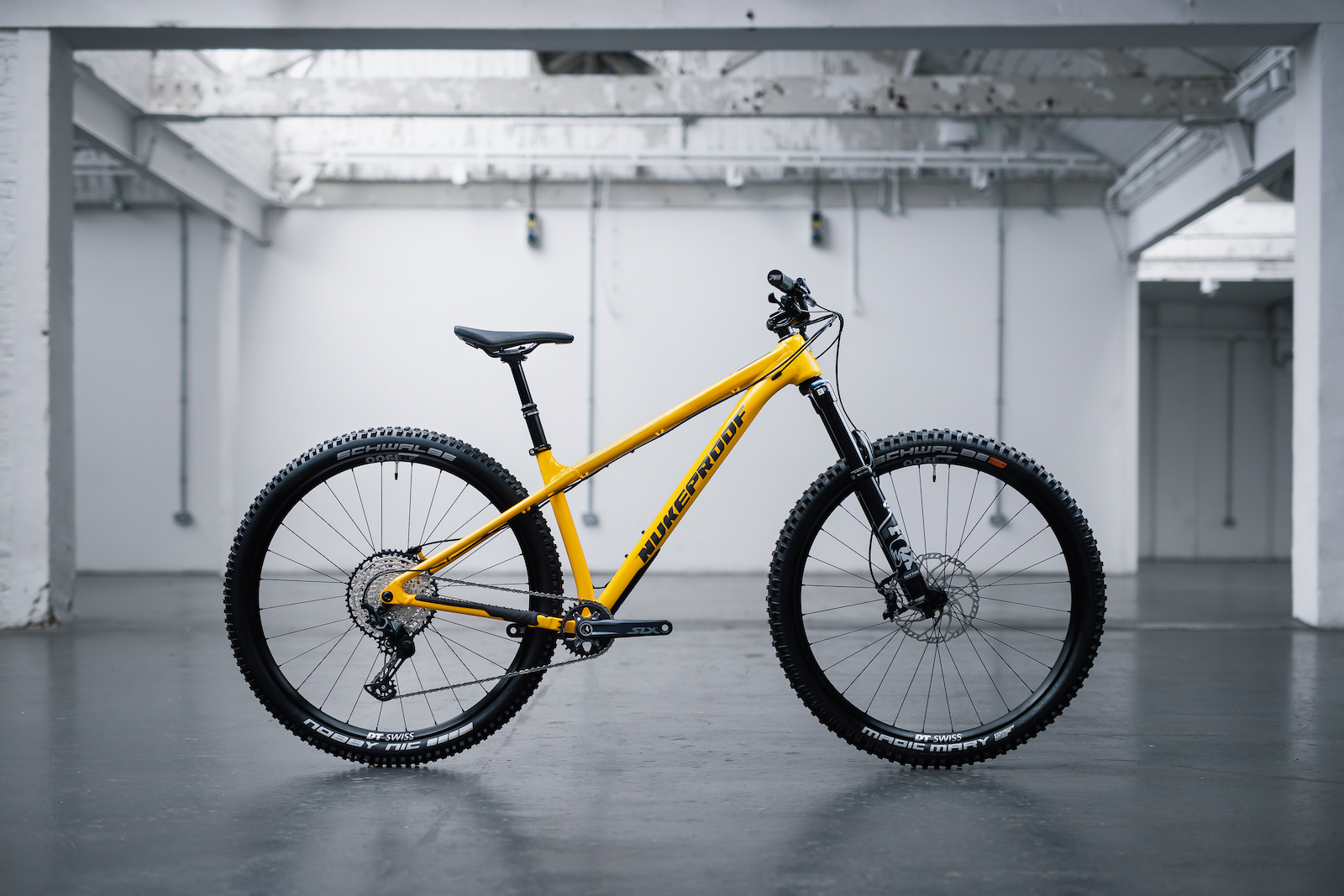Michelin recently expanded their mountain bike tire lineup with a beefed up version of their highly lauded Wild Enduro tires. The original standard white labelled Wild Enduro tires use Michelin’s single ply “Gravity Shield” casing, but this yellow and blue version features their dual ply “Downhill Shield” casing. Thus, the only thing really separating these tires from a Michelin DH tire is their foldable bead. It’s worth mentioning that prior to formally testing this set, I have had quite a bit of time on their lighter duty predecessor on a personal bike over the last couple of years. Anyhow, read on for the full scoop…
Details
- Magi-X DH rubber compound
- Downhill Shield casing
- Foldable bead
- 29″ X 2.4″ only
- 1462 grams front / 1467 grams rear – our scale
- $106.99 USD / $139.99 CAD
Looking at the front tire, we see quite a bit of spacing between the knobs, which are rather large and all of which features single sipes running horizontally and vertically.
On the contrary, things are a bit tighter out back. Interestingly, the knobs carry a similar profile, shape and row count, but they are smaller, lower in height and thus faster rolling.
Call it a wash…The Wild Enduro tires both measured at a tick under the claimed 2.4″ width on a 30mm inner diameter rim.
Up front, the corner knobs are staggered and slightly different in terms of their size and support. They all feature a vertical sipe…
The same can be said of the rear tire, but the knobs are slightly smaller, closer, and higher in count. The support running down to the sidewall is also slightly less robust.
Even after a fair bit of use, these tires are so sticky they pulled the paint off my garage floor any time I had my bikes sitting for more than a few minutes. Clearly it’s time for new paint, but this is also a testament to just how grabby the compound is…
On the trail
Having been familiar with the lighter duty Wild Enduros I felt very much at home on these beefier offerings right away. I would describe their tread pattern is being excellent in mixed conditions and highly versatile. In deep, loose loam or wet / muddy conditions, the front tires tall, broadly spaced knobs really bite in. When things get really muddy, the rear tire can have a tendency to pack up a bit, depending on soil composition – but generally speaking they’re quite good in that regard on net. On hardpack/firm and rock they are also surprisingly good, particularly given how well they perform in loose conditions. Most tires on the market are either/or when it comes to performance in loose versus firm terrain, but that was not the case here. Anyhow, I never had any hesitation leaning into corners and their bite point is right where you’d expect it. Interestingly, the lighter version of these tires are only available in the firmer “Gum-X” rubber compound out back, which I found a little bit skittish on wet roots and rocks. The version tested here features Michelin’s freakishly grabby “Magi-X” compound both front and rear, so while they do roll a little slower due to the added resistance, they also have a bit more bite when you’ll need it most.
Speaking of rolling resistance, out of the gate, I have to admit, at 1,460-ish grams these tires are quite heavy due to their rugged casings. This meant that even eeking my way down into the high teens for PSI (a range I rarely mess with) under some conditions, I never once suffered a flat and feel like I’d probably have to try to get one. You can think of the Wild Enduro Racing Line tires as DH tires, but with a folding bead. Now, this makes them an excellent contender for their stated goal of Enduro racing, where you could probably forgo tire inserts – at the very least up front anyway. They’re also a great candidate for an e-bike, a bike park rig, or heck I’d even consider them on my actual DH bike. With that in mind, I spent quite a bit of time on them on both my Enduro rig and my e-bike. On long days in the saddle on my human powered bike, the extra weight was admittedly a bit rough on my legs.
Overall
As far as durability and value is concerned, for better or for worse ~$107 is not way off the mark for an average high performance MTB tire these days. What I will say is that the Magi-X rubber compound wears freakishly well for how soft it is. This is due in large part to the fact that Michelin incorporates elements which provide the rubber with a very slow rebound. This helps not only with durability, but also with on trail manners as it improves vibration damping, stability and predictability. All in all these are excellent tires for a wide swath of the gravity oriented market. They are highly versatile, super grippy and rugged as can be. The main setbacks are weight and rolling resistance, but one should expect that with a tire with these specs. My only minor personal complaint is that I would like to at least see the rear tire offered in a 27.5″ option, so I can put them on my mullet bike. Regardless, these will stay on at least one of my bikes for the entirety of bike park season and they will also most certainly remain on my e-bike indefinitely.

